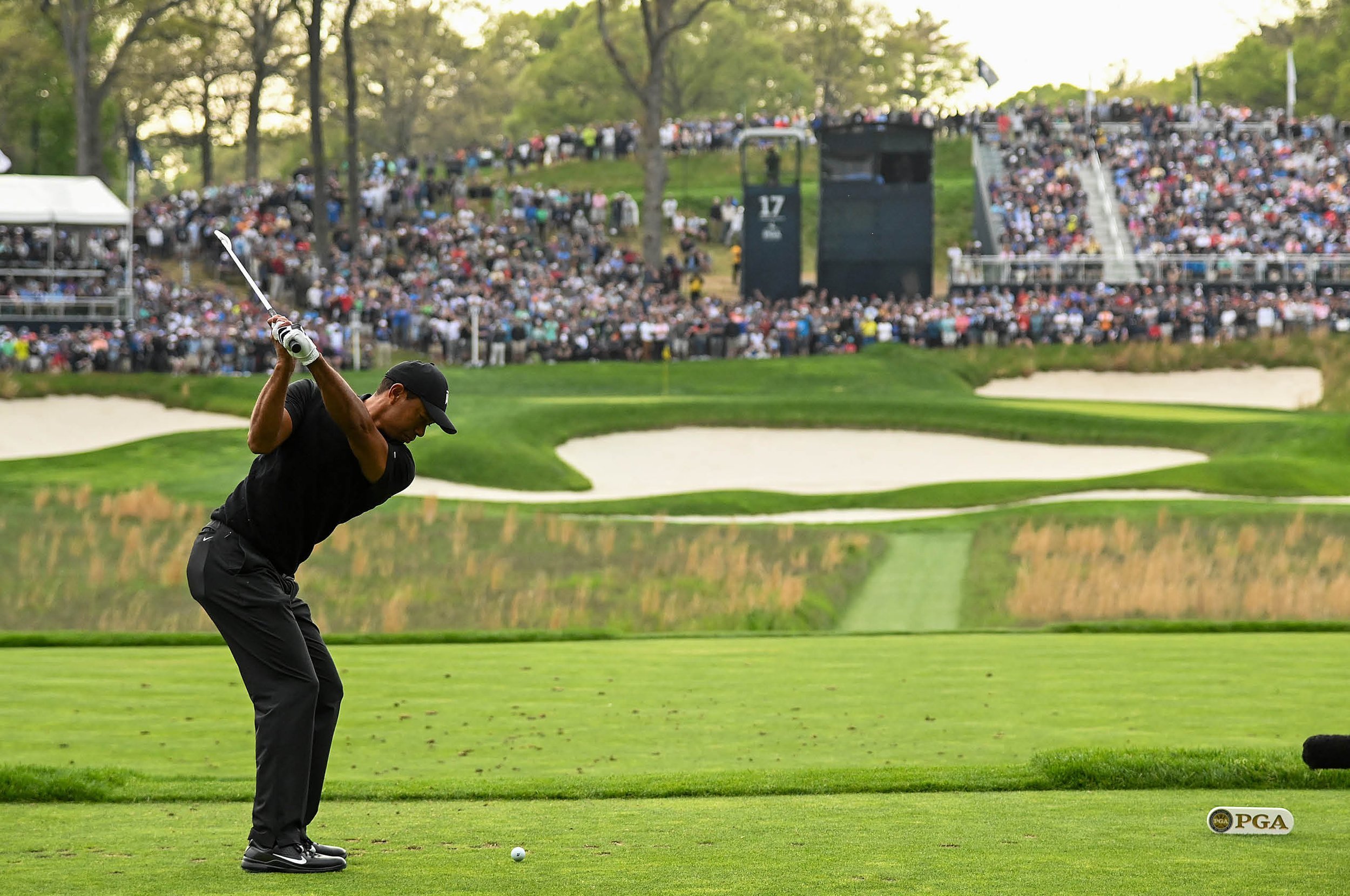What you need to know about Bethpage Black
It’s not often you find a golf course that questions you on the first tee: are you brave enough to take me on? Let alone on a public course. But this is Bethpage’s Black Course, the 2025 Ryder Cup host venue, and here in New York they don’t hold punches.
The sign on this fabled course reads: “WARNING – The Black Course Is An Extremely Difficult Course Which We Recommend Only For Highly Skilled Golfers”. There is good reason for this sign to be in place; with narrow fairways, an average of just 26 yards wide during its last hosting of a major, bordered by deep rough, plateaued greens and strategically sculptured bunkers, Bethpage’s Black Course is a brute. This fact is underlined by its continuing favour from those governing golf in the United States. U.S. Opens in 2002 and 2009, where only one player broke par in the former and five in the latter, the U.S. PGA Championship in 2019, FedEx Cup playoff events and that most monumental of nods to host golf’s trans-Atlantic tussle are insight enough into the pedigree here.
The five-course plot is a public facility run by New York State Parks, not exactly where you might expect to find a course ranked 62ndin the world and 27th in the United States. It means that New York residents can play one of the world’s top courses for just $65 on weekdays and $75 on the weekend, a jaw-dropping bargain. The green fee, though, is the easy part of gaining access to a first tee that’s about as in demand as any; you have to enter into the golfing equivalent of a last-man-standing parking lot Royal Rumble on the evening prior to the day’s play, nosing your car into a numbered parking space that’s effectively your ticket. Every golfer for themselves.
There is debate around the Black Course’s architectural origins, but until recently it’s been largely attributed to the prolific designer and colourful character A.W. Tillinghast, whose credentials resemble quite closely a list of the most celebrated layouts in the tri-State (New York, New Jersey, Connecticut) area: Baltusrol, Quaker Ridge, Winged Foot, Scarsdale, Sleepy Hollow, Wykagyl. However, protestations from the family have corrected the record to show that Joseph H. Burbeck, a superintendent at the State Park was in fact the original designer of the Black Course, with Tillinghast’s role shown to be as a consultant. The original route was opened in 1936 but was beefed up considerably by “U.S. Open Doctor” Rees Jones in advance of 2002 and ‘09; the twice national open host is, simply put, an outstanding layout, one that exhibits everything good about traditional American golf course architecture.
It’s a proper course, in the very sense of the word. ‘Championship’ is a descriptor used too loosely, but in this case, it’s deserved. Bethpage is a triumph of strategic design, particularly the placement of fairway bunkers which, thanks to the State Park having sufficient acreage, have remained relevant for today’s longer hitting golfers. Holes like the par-5 fourth encapsulate this perfectly: an S-shaped route with a string of cross bunkers stretched diagonally across the fairway, left to right, asks golfers questions about placing the ball both from the tee and approaching the lay-up area. The tameness of the 18th does leave something to be desired, a finish not quite the same standard as its contemporaries, but the monstrous 17 holes that come before more than make it up for it.
The Black course is famed for its club-tangling rough. Invariably, an offline tee shot is going to land you in grass that is thick, wet and giving you little chance of a clean strike, even from the trampled down spectator walkways. You’re simply not getting to the green, even with your best long-iron shot, so hitting fairways are an absolute premium; a hit and hope with a bomb from the driver isn’t going to cut it. It will be interesting to see much will this play into captains picks come 2025.
Bethpage Black has earned a reputation for rowdy fans, so where better to host one of sports greatest spectator events? The passion with which New York golf fans showed up in 2002 and 2009 was heralded by the sport, and even if things went a little too far in 2019 with chants openly rooting for Dustin Johnson over Brooks Koepka, that’s New York for you. Channelling this energy into the cauldron that is the Ryder Cup, we are in for a treat when the competition heads back across the Atlantic.



